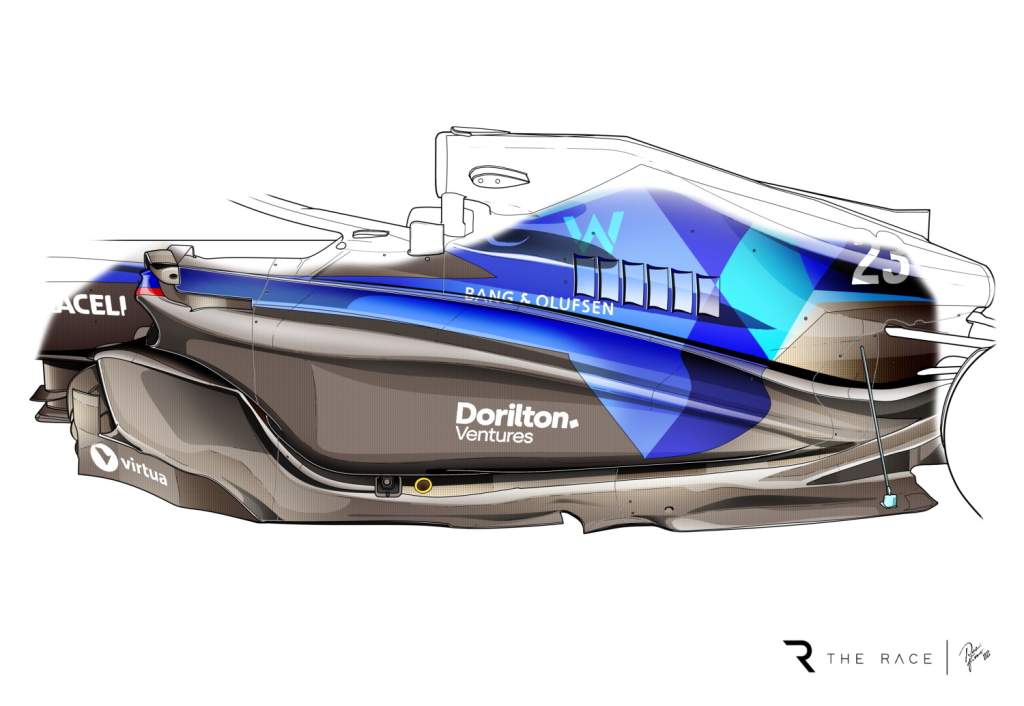Up Next

Williams has attempted to mix the best of “both worlds” in terms of the concept of its heavily-upgraded Formula 1 car, according to technical director Francois-Xavier Demaison.
Having launched with a Mercedes-style narrow-sidepod design, the team struggled during the first nine races, scoring only three points. The heavily upgraded Williams FW44 – introduced on Alex Albon’s car at Silverstone – features more conventional sidepods.
This is part of a shift in concept after the team realised that its original approach of running the car low to maximise the underfloor downforce wasn’t working. This led to the upgrade being designed around a higher ride height with an increased emphasis on top-body aero.
The elongated sidepods feature a Red Bull-style downwash aspect, as Albon highlighted at Silverstone before the car appeal. This ensures better airflow to the rear of the car and will work the beam wing harder, among other advantages.
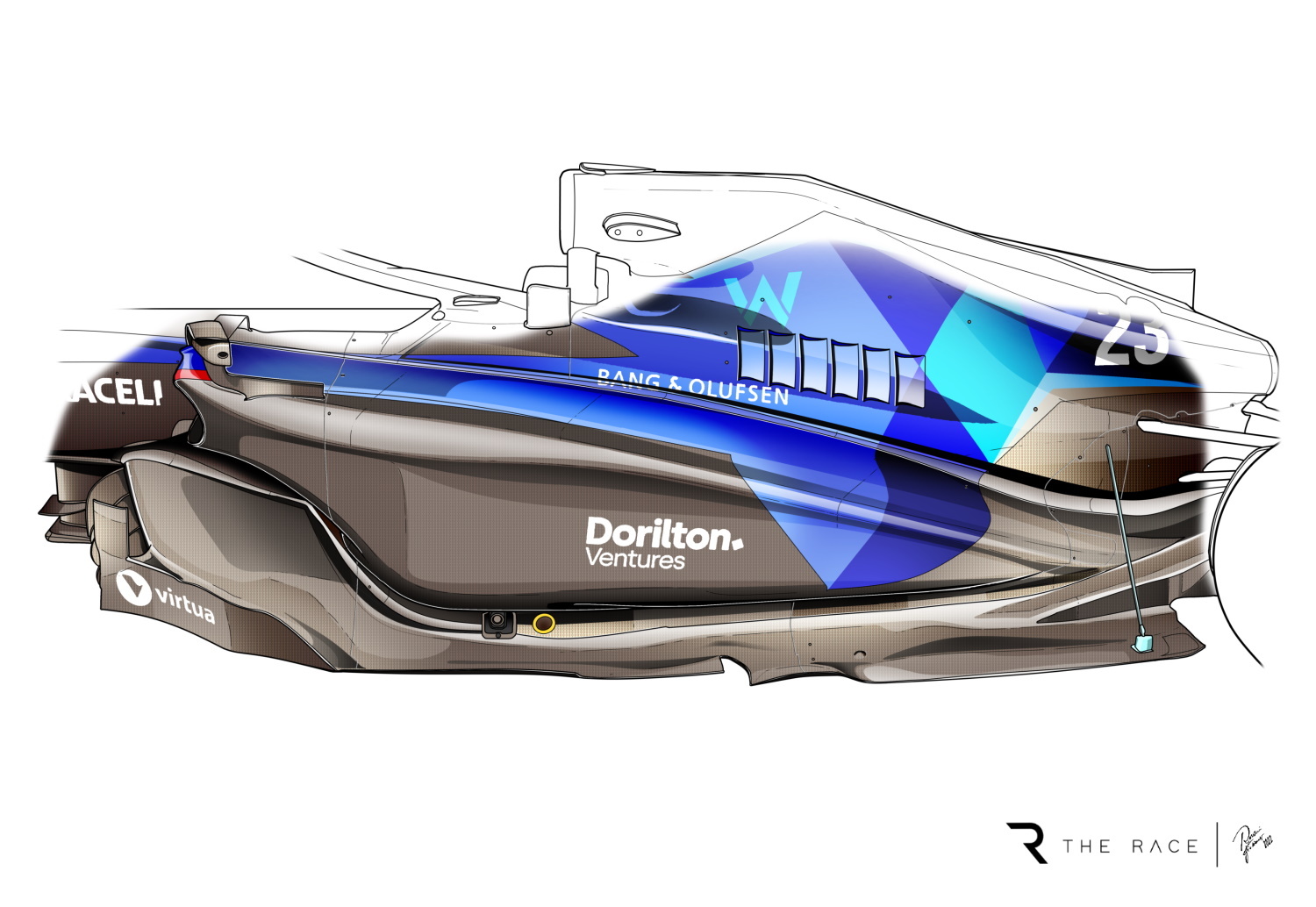
“It’s to run a softer car with a higher static ride height so you don’t lose so much in the slow sections with a lack of mechanical grip or lack of pure downforce,” said Demaison of the objective of the dramatic changes to the car.
“We tried to mix both of the worlds from the old Formula 1 concept with the flat floor, which was mostly creating the downforce with the floor but also on top of the car.
“So now we are creating downforce with the top of the car with these long sidepods and using the floor to make a smaller ground effect, so it’s really a mix of the two.”
Williams set to work on a change in the car concept early on, having realised that it was unable to run the car and low and stiff as required. This led to problems with the mechanical grip and ride.
But the upgrade was not available until the 10th event of the season at Silverstone owing to the time required to evaluate the changes and design and produce the parts.
“Very quickly,” said Demaison when asked when work was started on this new concept.
“Our [original] concept was mostly concerned about creating downforce with low ride height. This was our launch concept.
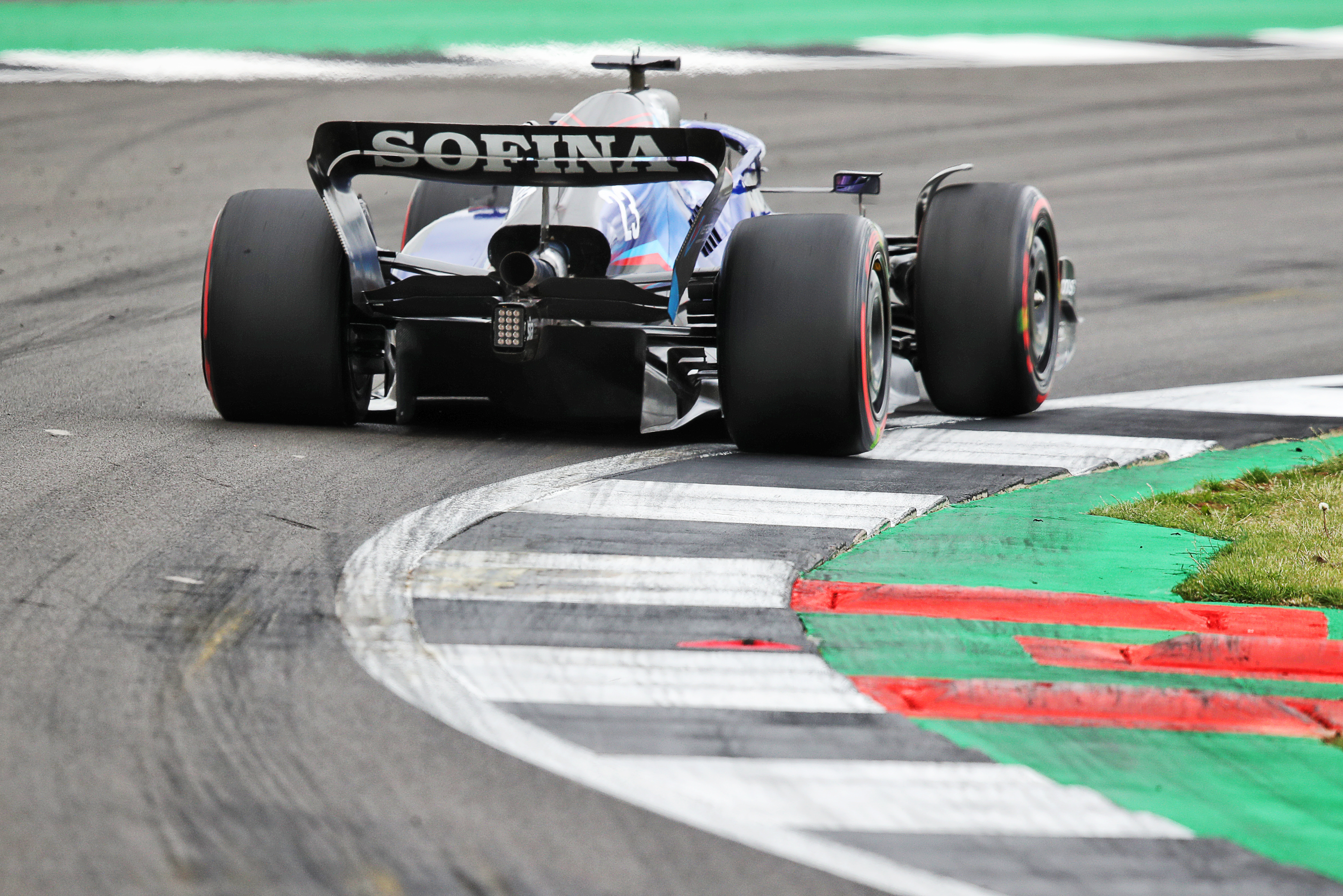
“As soon as we wanted to push a little bit the rear stiffness, it was too complex. We were wearing the plank, the drivers complained.
“So we said, ‘let’s go in the other direction’. We saw many, many other cars going in other directions. We are not stupid, we could have gone somewhere else but we say ‘let’s just look at what the others do’.
“So this took a bit of time and analysis because we didn’t want just to copy without understanding what is behind it. That’s why only in race 10 we see it because we first wanted to understand this concept.”
A combination of rain in FP1 and qualifying and Albon’s elimination in the start crash during the British Grand Prix weekend restricted Williams to just 36 dry-weather laps with what Demaison described as a “new car”.
But while the car was unable to show its pace and the team has yet to have enough mileage to build its understanding of the car, Albon’s initial feedback was encouraging.
“We don’t know this car, we haven’t run it enough given the conditions to really understand it,” said Demaison.
“Normally when you come with what we can really call a new car, the first time we put the car on track the driver says ‘I prefer the older car’ – it’s habit and they know it.
“But it was positive and Alex was really happy with the through-corner balance. It was an improvement, maybe not in overall downforce but the balance makes it faster.”
GARY ANDERSON SAYS…
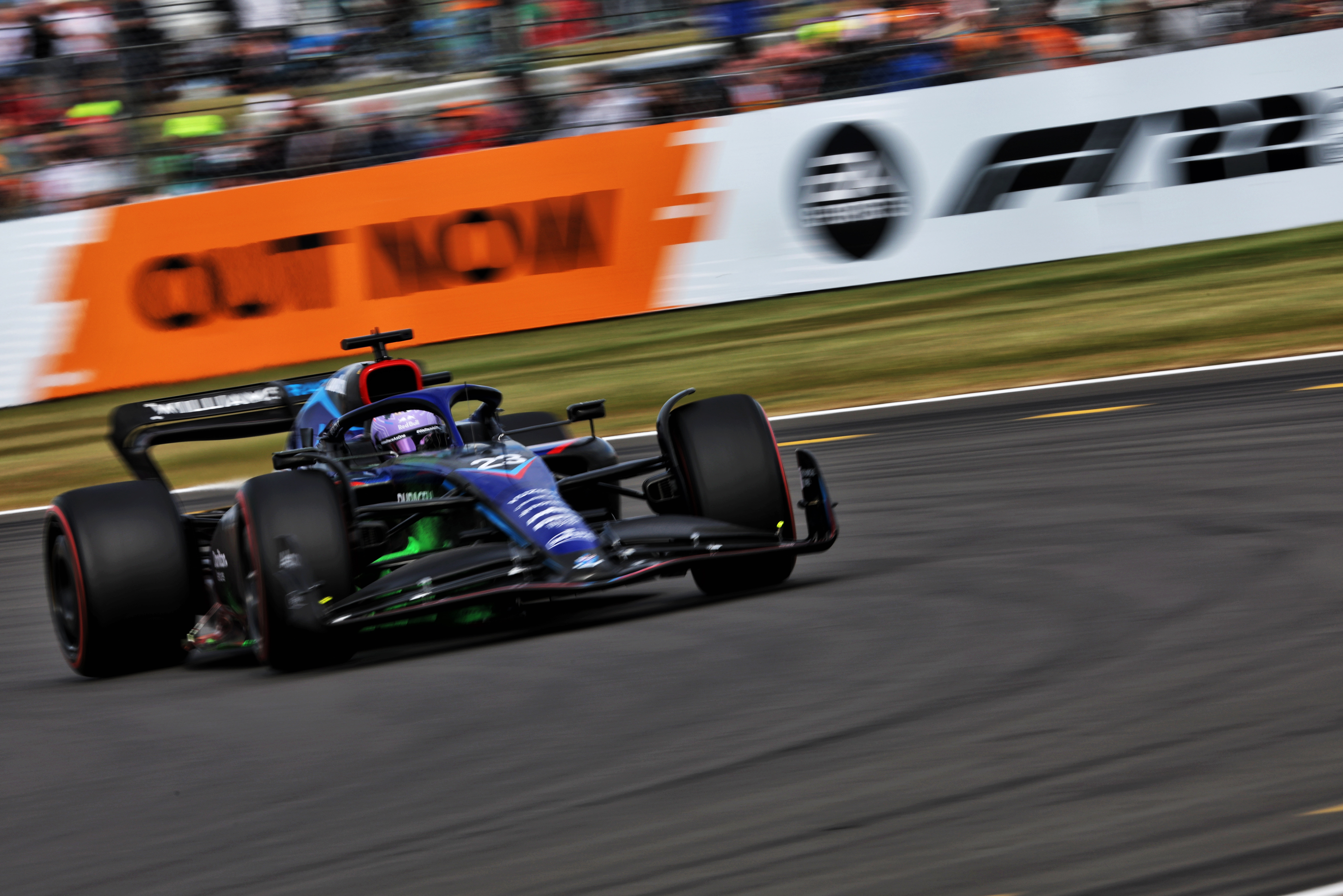
To get the best out of a package, you need to exploit both the underbody and overbody downforce-generating surfaces.
But on the way to achieving that, you need to be careful not to work any of these surfaces so hard that you get to their critical flow velocity. If you do that, inconsistency sets in, especially running in traffic or on a windy day when the upstream airflow is less than perfect, this will upset the balance of the car.
So how do you go about prioritising the order of research?
In F1, the corners that matter because they are grip-limited range from around 50km/h to 300km/h. So if you were driving down a straight and accelerating through that speed range with a practical vertical stiffness at front and rear, the car would reduce in ride height with the change in aerodynamic load by about 20mm at the front and 60mm at the rear.
If possible, during that ride height change you would want the centre of pressure to shift slightly rearward – probably by about 1% to 2% as that ride height change is happening.
This is the first thing you need to achieve. It doesn’t matter where the downforce is coming from as long as you can manage it and control it.
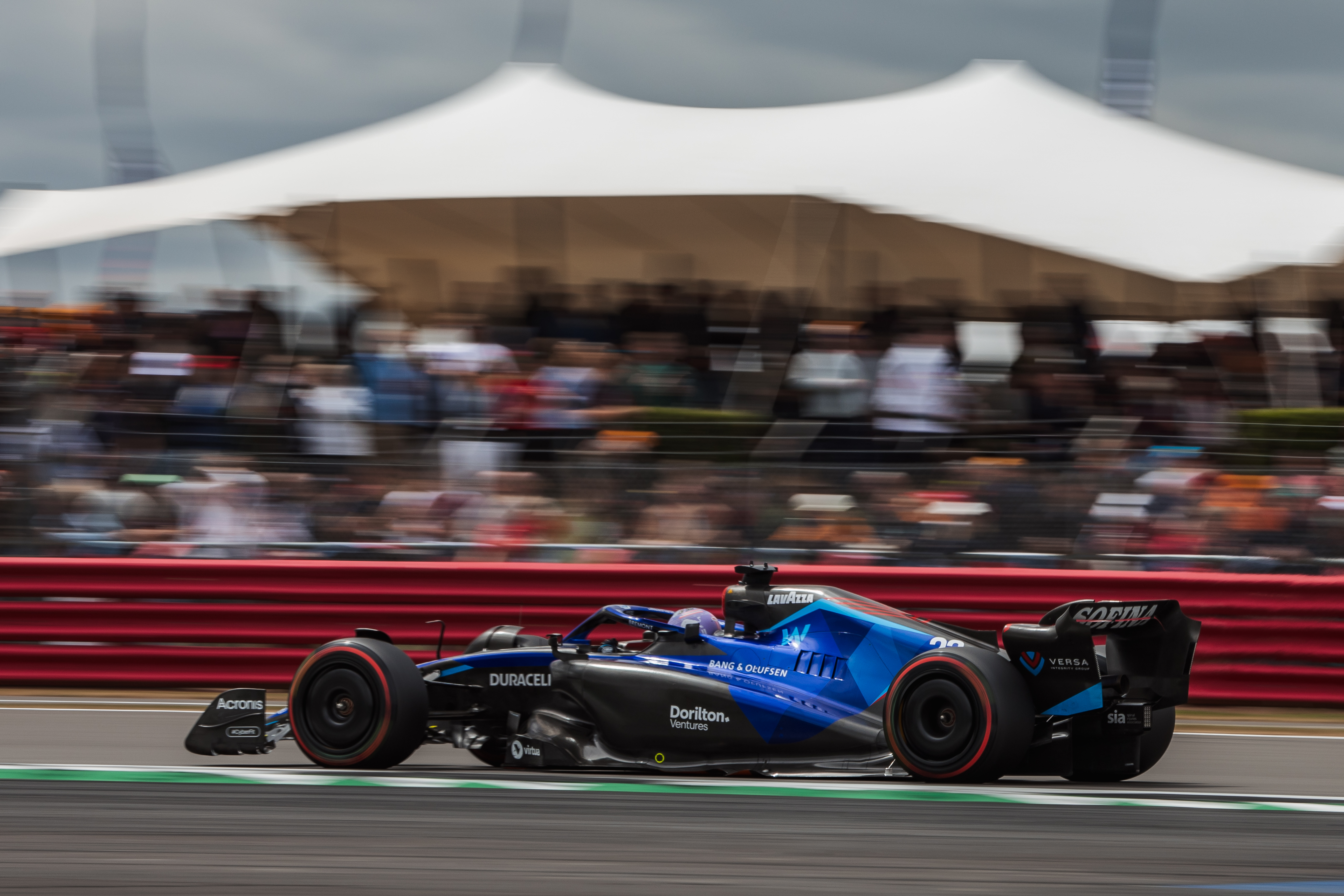
Next, you look into braking stability from different speeds. So you will evaluate different car braking attitudes at different speeds to see how the centre of pressure shifts during those episodes. With that ratio of front to rear vertical stiffness and the weight transfer, the front will dip slightly and the rear will come up about three times as much.
If possible, you want the centre of pressure to shift rearward to make up for the gain of load on the front axle and the loss of load on the rear axle. For every ‘g’ there will be about a 50kg load shift, so making up for some of that with the aero shifting rearwards is critical to braking stability.
Then you need to evaluate the centre of pressure shift when the car rolls, normally you would want this to stay fairly stable.
When you apply steering lock, the centre of pressure should start to move forward slightly. It will also increase as more steering lock is applied to reduce understeer in slow-speed corners.
If you have to run the car with a dramatically different stiffness ratio front to rear than 3:1 (three times the vertical stiffness on the front compared to the rear), you are digging a hole for yourself.
If you have to go to something like a 2:1 ratio to produce the downforce or control the aero shift, then it will compromise the mechanical grip.
This is basically what the teams have done by finding large numbers of downforce from the underfloor. And it explains why teams like Williams have had to take a step back to produce a car that focuses on using the downforce created by the upper surfaces rather than focusing primarily on the very high downforce numbers and efficiency you can theoretically achieve from the underfloor.
Changing the concept in this way should mean Williams has a more usable car. If the downforce level is similar, as Demaison suggests, and there’s potential for further improvements then it’s likely the upgrade has set it on the right path.


